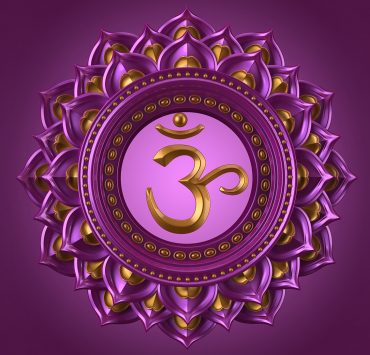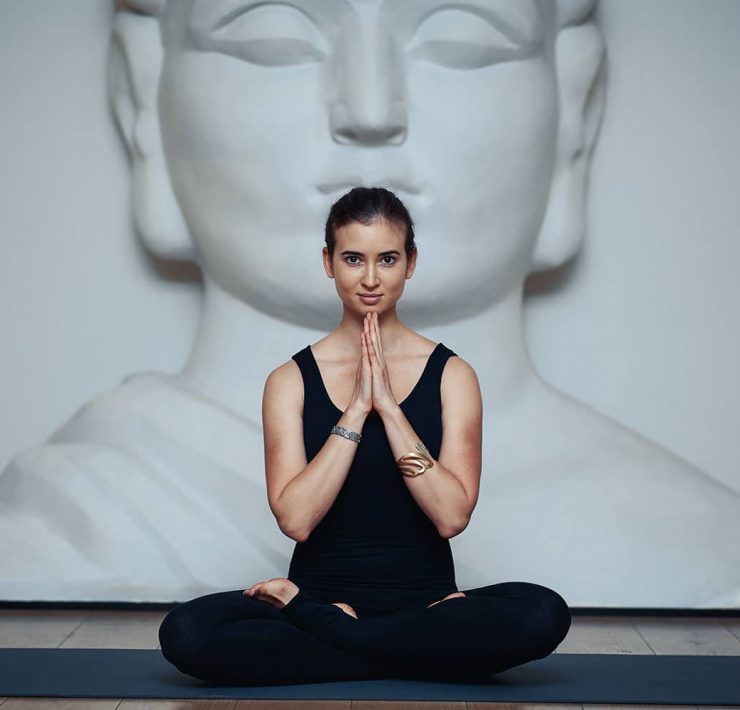
Rose graduated with a degree in Anthropology, which takes her…
If you are beginning to take your yoga practice off the mat and explore its philosophical roots, the first concept you may come across is the 8 limbs of yoga. But what are the 8 limbs of yoga? This can sound rather mysterious to a newcomer to yogic philosophy. Even the phrasing limbs may make it sound like some kind of advanced yoga pose. The truth, however, is that the 8 limbs of yoga are a set of philosophical principles that were built to guide the yogi to enlightenment. By learning and practicing each limb in sequence, and simultaneously, the yogi may achieve a state of complete balance and peace known as Samadhi, or enlightenment. This is, after all, the goal of yoga. However, the journey through the 8 limbs of yoga is more important than the final destination: It is what is learned along the way that is the real yoga. If this is your first time educating yourself on the 8 limbs of yoga, congratulations, for you are taking your first step along the path of yoga.
The Yoga Sutras of Patanjali

To understand the 8 limbs of yoga, it is first important to take a historical look at their origin. In the second century, the Indian sage Patanjali created his Yoga Sutras. It is thought that these sutras, or short lessons or sayings, were originally passed down orally, before being recorded. There have been many translations and interpretations over the years, but Patanjali’s Yoga Sutras can still be purchased and read. In fact, they are a central text in yoga teacher trainings and represent the most basic and essential text in yoga today.
In The Yoga Sutras, Patanjali explains the priciniples and goals of yoga. He does this through what he calls an eight fold path, or the eight limbs of yoga. Through the sutras, Patanjali explores eight important principles that the yogi must follow and master. These include the yamas, niyamas, asanas, pranayama, pratyahara, dharana, dhyana, and samadhi, which are discussed in depth below.
The Eight Limbs Of Yoga
Yamas

When you are steadfast in your abstention of thoughts of harm directed toward yourself and others, all living creatures will cease to feel fear in your presence. Patanjali
The first of the 8 limbs of yoga is also the first limb that must be mastered. It is known as the yamas, or moral restraints. The yamas refer to how the yogi interacts with the world around them, and well as with their inner self. They teach a kind of social conduct and morality that the yogi must observe in their interactions with not just other people, but also with their thoughts about themselves. There are five yamas that must be observed.
Ahimsa (Non-violence): Following ahimsa, the yogi must practice non-violence and compassion toward all beings. This includes physical non-violence, as well as relinquishing incompassionate self-talk. Some yogis take the yama of ahimsa literally and use it to justify lifestyles such as veganism, in which the yogi lives freely and peacefully and abstains from killing any living animal.
Satya (Truth): The second yama is satya, and refers to truthfulness. The yogi must practice truth and honesty with others, as well as themselves. This may require deeping deep into their psyche to acknowledge the truth behind their behaviors or repetitive thought patterns. Through truthfulness the yogi will be able to see the world clearly for what it really is.
Asteya (Non-stealing): The yogi must also practice asteya, or non-stealing. This of course carries the literal interpretation that yogis should not steal or take from others what is not theirs. However it can also be interpreted in other ways. For example, arriving late could be seen as stealing another person’s time. Taking favors may be a form of stealing from others, if they are not repaid. There are many ways a person can steal, and they are not all obvious. The yogi who practices ahimsa is aware of these and refrains from all types of stealing.
Brahmacharya (Oneness with the Divine): Perhaps the most misunderstood of the yamas is that of brahmacharya, or oneness. This yama was historically interpreted as celibacy – that the yogi should abstain from sexual activity in order to preserve their oneness with the divine. In more modern times, however, it is more often interpreted as rationing of energy, including sexual energy.
Aparigraha (Non-attachment): The final yama is aparigraha, or non-attachment. A yogi who practices aparigraha is equanimous of mind and spirit. They do not become attached to objects, people, or outcomes. Rather, they exist in the moment and take life as it occurs around them. Attachments to the ego are released and the yogi is able to see their true inner Self.
Niyamas

Sloth is the great enemy — the inspirer of cowardice, irresolution, self-pitying grief, and trivial, hairsplitting doubts. Patanjali
The second limb of yoga is closely interlinked with the first. The niyamas, like the yamas, consist of five lessons that the yogi must live by. They are thought of as observances, rules, or regulations that the yogi must follow. Whereas the yamas refer more to the yogi’s interaction with the outside world, the niyamas are thought to be more internal instructions on how the yogi must treat their inner Self.
Saucha (Purity): The first of the niyamas is saucha, or purity. The yogi must maintain purity of mind, body, and spirit. This is a complex task, and includes the yogi’s choice of foods that enter their body, thoughts that enter their mind, and more. With purity, the yogi cleans the slate of their inner Self and prepares themselves for the following limbs of yoga.
Santosha (Contentment): The second niyama is santosha, or contentment. It does not refer to creating an environment that brings contentment. Rather, this niyama teaches the importance of finding happiness and contentness of spirit in any circumstance. If the yogi can find peace even in the most difficult of times, then they have mastered santosha.
Tapas (Burning energy): Tapas refers to burning energy or enthusiasm. This is typically associated with the feeling of heat building in the belly during a rigorous yoga practice – as the yogi works hard and with determination, they will build heat and energy within the body. Beyond the physical, however, the yogi can take this same energy and willpower into all acts of life.
Svadhyaya (Self study): Self study, or svadhyaya, is necessary for the yogi who truly wants to explore all 8 limbs of yoga. To practice yoga is to know thyself. The yogi must dedicated themselves to diving internally and examining their ego, their preconceptions, their attachments, their desires, their ignorance, and finally, to release all these things.
Ishvaripranidhana (Surrender): The final niyama is surrender, or ishvaripranidhana. Once the yogi has learned the previous yamas and niyamas, they will be ready to surrender their ego and give all they have to the Divine. Rather than a religious experience, this should be seen as a spiritual surrender, and an acknowledgement that the yogi is one with all beings. They are neither better nor worse than anyone else; they are merely and blessedly a piece of the universe.
Asana

Asanas bring perfection in body, beauty in form, grace, strength, compactness, and the hardness and brilliance of a diamond. Patanjali
The third limb of yoga is the one that is most overemphasized, but also most recognizable. When people in the West think of yoga, they often are picturing this third limb: Asana. Asana refers to the physical postures of yoga. There are myriad asanas, or yoga poses, and while they are an essential part of the practice, they are but one piece of the larger puzzle. The word asana itself translates from Sanskrit to comfortable seat. Drawing on santhosha, or contentment, as well as the other yamas and niyamas, the lesson is that the yogi must learn to find peace in any posture, whether difficult or simple. Even the simplest of asanas may become incredibly challenging when held for long periods of time. The point here is not to build muscle or stamina, but rather to build an inner peace and willpower that can overcome any physical circumstance. Understanding this greater mental purpose of asana is integral if the yogi is to continue along the eight fold path. When practicing asanas with this lesson in mind, the yogi is actually preparing their body for meditation.
Pranayama

The quality of our breath expresses our inner feelings. T.K.V. Desikachar
The fourth limb of yoga is pranayama, or breathing techniques. There are a variety of breathing techniques that the yogi may learn. This refers to specific ways of controlling the breath, from timed inhales and exhales, to alternate nostril breathing, throat constriction, and more. Each method of pranayama carries with it different spiritual, physical, and emotional benefits. Some methods, such as ujjayi breathing, may be energizing. Others, such as nadi shodhana breathing, are calming and relaxing. Ultimately the purpose of pranayama is to marry the body and mind. Think of this in terms of the body’s physical response to stimulation: In a frightening scenario, a person may realize they are breathing quickly, or are maybe holding their breath. Pranayama as a practice turns the tables. By controlling the breath first, the yogi is able to influence their body’s physiological response, and therefore more easily control the mind. During asana practice, each pose should be matched with an inhale and exhale. Likewise, it is breathing that leads the yogi from awareness and into the stillness of meditation. Just as the word ‘yoga’ itself means union, it is pranayama that performs this union.
Pratyahara

The way to eliminate ignorance is through steady, focused discrimination between the observer and the world. Patanjali
Pratyahara, or sensory withdrawal, is the fifth limb of yoga. As the fifth limb of yoga, it is the beginning of the more cerebral yogic teachings. Many yogis fixate on the simpler asanas or even pranayama. Adding pratyahara, or sensory withdrawal, to the previous limbs is an important step, though. With sensory withdrawal, the yogi learns to detach themselves from the stimuli of the outside world. This could be seen as focusing during a yoga pose despite loud music, overcoming the sensations of pain, releasing bodily cravings, and more. Some literal interpretations of pratyahara are used to justify yoga retreats or monastic living. However, it is arguable that this is a misinterpretation of true pratyahara. To truly practice this limb of yoga, the yogi must learn to withdraw their senses, even from within a stimulating environment. Consider the yogi as the eye of a hurricane: Peaceful and balanced despite the world raging around them.
Dharana

If you can control the rising of the mind into ripples, you will experience yoga. Patanjali
The sixth limb of yoga is dharana, meaning complete and total focus. How is this different from sensory withdrawal? Sensory withdrawal is necessary for the yogi to foster focus. The yogi must cultivate the ability to concentrate on a single item, object, or thought. Examples of practicing dharana include imagining a single bright white light during meditation, repeating a mantra, or using a steady point of gaze during asana. With each of these methods, the yogi is training themselves to tune out the world and limit their focus to one object. By achieving total focus, the natural effect is releasing outside attachments and ego.
Dhyana

In deep meditation the flow of concentration is continuous like the flow of oil. Patanjali
Dhyana is more commonly known as meditation. It is the penultimate step along the 8 limbs of yoga. When looked at together, it is clear how the other previous limbs are building up to the state of meditation. To meditate, the yogi must be able to focus, withdraw their senses, and find a comfortable seat, both physically and mentally, no matter the circumstances. With meditation, the yogi goes one step beyond dharana. Instead of choosing a focal point, the yogi focuses on nothing and everything at once. Their mind becomes a still and empty pool, with thoughts flowing through without any attachment forming. The yogi exists within the universe but does not engage with it. True peace is found here.
Samadhi

A mind free from all disturbances is yoga. Patanjali
Samadhi, the eighth and final limb of yoga, means enlightenment. The yogi who has reached Samadhi is truly liberated from their ego and the entrapments of the physical world. They acknowledge their oneness with the Divine and all beings, at once equalizing their spirit and acknowledging their innate royalty and power. The yogi who has reached Samadhi has no desires or expectations. They exist in the world without any sensory intrusions or attachments. It is the rare yogi who reaches Samadhi, yet it is the goal of all yogis who traverse the eight fold path to reach this point.
Conclusion
The 8 limbs of yoga are both a set of philosophy, and a lesson plan for the curious yogi. They are both complex and practical. Yogis who endeavor to reach enlightenment will find themselves returning to the eight fold path, adjusting their practice, and learning and relearning the philosophy for their entire life.
What's Your Reaction?
Rose graduated with a degree in Anthropology, which takes her understanding of basic human needs to a whole new level. Her intelligence and passion for healthy living is reflected in her written work.














